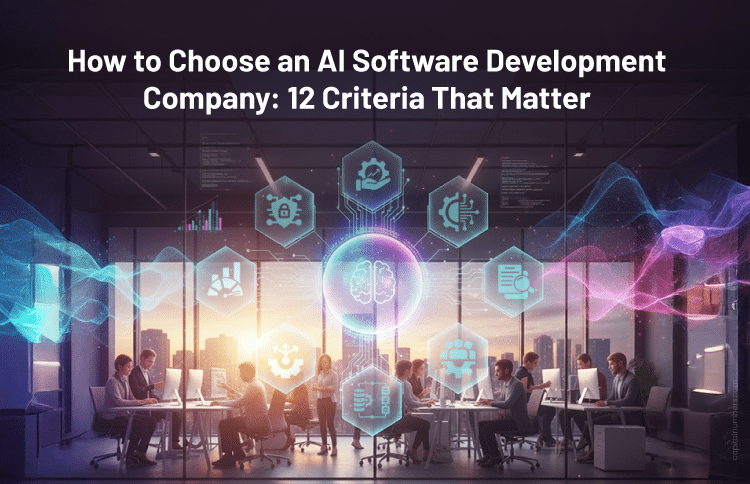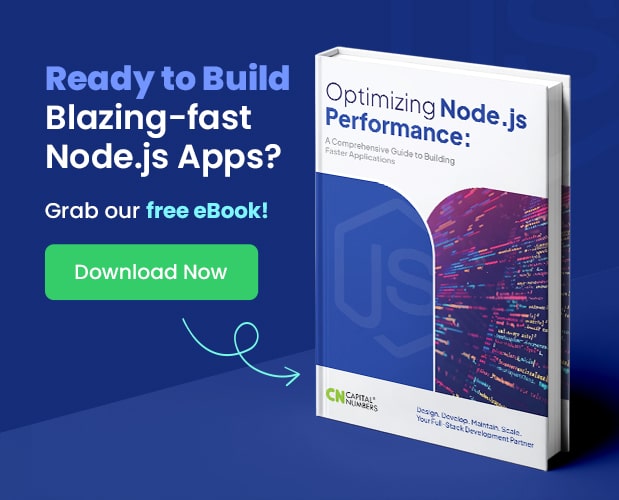Quality at Speed: A CTO’s Guide to Delivering Flawless Software
Table of Contents
Every modern business now runs on software, and the expectations are unforgiving. Users demand instant, flawless digital experiences. Leadership wants faster delivery cycles and scalable architectures. Teams crave autonomy with clarity.
Balancing all of that is no small feat. But it’s also what defines a modern technology leader.
The organizations that win today are those that master quality at speed which is the ability to build, test, and ship continuously without compromise.
From my own experience leading engineering transformations, I’ve learned that speed and quality are not opposites. They are the results of good architecture, disciplined automation, and empowered teams. When done right, they reinforce each other.
This guide explores how to make that happen across architecture, development, testing, delivery, and culture.
Redefining Quality and Speed
Speed is not about deploying quickly; it’s about learning quickly.
Quality is not about defect counts; it’s about user trust – reliability, performance, and predictability.
Modern teams measure quality by resilience and speed by feedback loops. They automate validation, reduce decision friction, and build systems that are easy to change safely.
The companies that thrive are those where engineers can move fast without fear, because everything around them, the codebase, tooling, and processes, supports safe change.
Architecture Designed for Adaptability
Great software doesn’t age, it evolves. That’s only possible if your architecture is built for change, not permanence. Key principles of modern system design:
- Modular and Decoupled: Microservices, modular monoliths, or domain-based architectures that allow independent scaling and deployment.
- API-First Thinking: Define contracts early with OpenAPI, GraphQL, or gRPC to enforce clarity and consistency.
- Observability Built-In: Every component should emit metrics, logs, and traces for real-time insights.
- Feature Flags & Progressive Rollouts: Deploy continuously but release strategically. Enable, monitor, and roll back instantly when needed.
Adaptable architecture doesn’t slow innovation, it enables it safely.
Frontend Engineering: The Art of Instant Trust
Your frontend is where perception meets performance. One delay, one inconsistency, and trust breaks. Modern frontend teams combine discipline, automation, and empathy to deliver experiences that feel effortless.
- Type Safety Everywhere: TypeScript, component libraries, and strict typing prevent silent regressions.
- Component Isolation: Use Storybook or similar tools for visual validation in isolation.
- Automated Visual & Accessibility Testing: Tools like Playwright and Axe ensure consistency and inclusivity.
- Edge Rendering and Smart Caching: Frameworks like Next.js, SvelteKit, and Astro make performance intrinsic, not optional.
A great frontend is the result of precision disguised as simplicity.
Backend Engineering: Building for Reliability
The backend is your invisible foundation. When it fails, everything else does. Modern backends are designed around resilience, consistency, and elasticity.
- Event-Driven Design: Use message queues, streaming, and serverless functions for decoupled scalability.
- Data Reliability: Schema migrations, versioned APIs, and automated backup testing prevent silent failures.
- API Governance: Enforce consistency with schema validation and automated contract testing.
- Resilience Testing: Regular chaos experiments validate recovery and redundancy mechanisms.
A resilient backend doesn’t just handle traffic, it handles uncertainty.
Infrastructure and Platform Engineering
Speed and stability coexist when teams build on strong foundations. That’s why modern DevOps has evolved into platform engineering, giving teams self-service capabilities while maintaining governance.
- Infrastructure as Code: Terraform, Pulumi, or Crossplane make your environments reproducible.
- GitOps: ArgoCD and Flux ensure deployments are declarative and auditable.
- Policy as Code: Use OPA or Kyverno for automated compliance and security enforcement.
- Self-Service Environments: Let developers create standardized dev/test setups on demand.
The best platforms make doing the right thing the easiest thing.
Delivery Pipelines: From CI/CD to Continuous Verification
CI/CD is no longer just automation; it’s confidence automation. The most effective pipelines are intelligent and self-aware.
- Layered Pipelines: Fast validation on commits, deeper suites on merges, and live checks after deployment.
- Caching and Parallelization: Build once, test everywhere.
- Progressive Delivery: Canary, blue-green, and feature-flag-based rollouts to reduce blast radius.
- Continuous Verification: Post-deployment checks confirm that releases behave as expected in production.
A great pipeline doesn’t just ship code faster, it protects users from unfinished ideas.
Quality Engineering and Test Automation
Testing has transformed from a step in the process to a continuous safeguard. It’s now embedded throughout the lifecycle, from commit to production.
- Unit, Contract, and API Tests: Automate what can break most often.
- End-to-End Scenarios: Focus on critical user flows, not exhaustive permutations.
- AI-Augmented Testing: Use AI to generate edge cases, detect flaky tests, and optimize coverage.
- Ephemeral Test Environments: Spin up isolated, production-like setups on demand for integration tests.
- Performance and Chaos Testing: Integrate reliability testing into every sprint.
Quality engineering is about finding risks early and automatically, not about adding manual gates.
Security and Compliance by Default
Security can no longer be reactive or external. It has to be baked into every layer of the delivery chain.
- Shift-Left Security: Static and dynamic scans (SAST, DAST, SCA) built into CI/CD.
- Zero Trust Everywhere: Every identity, service, and connection must be verified continuously.
- Secret Management: Centralized systems like Vault or AWS Secrets Manager, never hard-coded keys.
- Supply Chain Protection: Software Bill of Materials (SBOM) and artifact signing are now table stakes.
- Compliance as Code: Automate enforcement of data retention, privacy, and audit standards.
Secure teams move faster because they don’t need to pause to check later.
Observability: From Monitoring to Insight
Monitoring tells you what happened. Observability tells you why it happened, and soon, what will happen next.
- Unified Telemetry: OpenTelemetry has standardized instrumentation across stacks.
- SLO-Driven Operations: Define reliability in business terms, not technical ones.
- AI-Driven Anomaly Detection: Modern platforms highlight risks before users do.
- Full Context Visibility: Logs, metrics, and traces converge into actionable insights.
Observability is your early-warning system, the heartbeat of quality at speed.
AI in the Engineering Workflow
AI has become the new teammate in modern software delivery. From code generation to incident response, it’s transforming how teams operate.
- AI-Assisted Coding: Developers use copilots to handle repetitive patterns and boilerplate.
- Intelligent Code Review: ML-based systems flag potential bugs and vulnerabilities early.
- Natural Language Documentation: AI tools now summarize PRs, changelogs, and architecture diagrams automatically.
- AI in Operations: Predictive analytics detect anomalies, summarize incidents, and trigger automated responses.
But oversight is key.
“Treat AI like a junior developer, fast, helpful, but requiring review.”
The smartest teams use AI to accelerate learning, not just output. In practice, this means balancing automation with human judgment. Let AI reduce cognitive load, but never replace critical thinking.
You May Also Read: The AI Helper for Developers: Making Coding Easier and Faster
Project Management and Delivery Methodologies
Modern delivery is not about strict methodologies, it’s about adaptive flow. Leading organizations blend Agile, Lean, and Flow principles to focus on outcomes, not ceremonies.
- Value Stream Management: Visualize and optimize flow from idea to delivery.
- Outcome-Based Planning: Replace fixed roadmaps with flexible quarterly OKRs.
- Empowered Teams: Fund missions, not projects. Give teams ownership of business outcomes.
- Data-Driven Delivery: Replace subjective status updates with metrics like lead time and flow efficiency.
Project management has evolved from tracking activity to engineering flow optimization.
FinOps and Sustainable Engineering
Speed is only meaningful if it’s sustainable, financially and environmentally.
- Cloud Cost Visibility: Attribute cost per environment, per feature, or even per commit.
- GreenOps Practices: Optimize compute and resource usage to reduce carbon impact.
- Performance Equals Efficiency: Faster, leaner code often consumes fewer resources, good for both cost and planet.
Engineering excellence now includes fiscal and ecological responsibility.
People and Culture: The Hidden Engine of Velocity
Technology enables speed, but culture sustains it.
- You Build It, You Run It: Teams own their features end-to-end.
- Blameless Postmortems: Mistakes are data points, not career risks.
- Psychological Safety: Innovation happens when failure is safe to discuss.
- Continuous Learning: Upskilling, mentoring, and retrospectives keep velocity healthy.
- Product-Led Engineering: Every decision ties back to measurable user or business impact.
The best engineering cultures don’t chase productivity, they build environments where productivity is natural.
Measuring What Matters
| Metric | Target | Purpose |
|---|---|---|
| Lead Time for Change | < 24 hours | Faster feedback loops |
| Change Failure Rate | < 10% | Sustainable release confidence |
| MTTR (Mean Time to Recovery) | < 1 hour | User trust and resilience |
| Cycle Time per PR | < 1 business day | Continuous delivery flow |
| Automated Test Coverage | ≥ 80% | Early risk mitigation |
| Error Budget Burn | < 80% | Balance between speed & stability |
What you measure defines what you improve. Focus on flow, recovery, and learning, not vanity metrics.
A Practical CTO Playbook for Quality at Speed
Here’s a simple framework to start transforming your delivery ecosystem:
- Define clear service-level objectives for key systems.
- Map your delivery pipelines and identify feedback delays.
- Implement GitOps for environment parity and traceability.
- Automate all quality, security, and compliance checks.
- Adopt feature flags and progressive rollouts.
- Establish blameless incident reviews and learning rituals.
- Introduce metrics-driven retrospectives tied to outcomes.
- Continuously simplify, complexity slows quality down.
Speed comes from clarity, not chaos.
The Future: From Automation to Autonomy
The next wave of engineering excellence will be powered by autonomy, systems that self-test, self-diagnose, and self-heal.
- Predictive QA pipelines that assess release risk before deployment.
- Self-healing infrastructure that responds intelligently to incidents.
- AI-powered continuous verification systems that validate real-time reliability.
- Unified governance across DevOps, MLOps, and SecOps.
Software delivery is shifting from human-driven control to system-driven assurance. The goal is not fewer humans, it’s more human focus on creative problem-solving.
Closing Thoughts
Delivering flawless software at high speed isn’t about working harder. It’s about working smarter, safer, and more predictably. When automation reinforces consistency, architecture enables flexibility, and culture encourages ownership, quality and speed, stop competing. They start compounding.
The real magic happens when your teams can move fast because they know quality is guaranteed by the system itself. That’s what true Quality at Speed looks like and it’s what defines every world-class engineering organization today.

















